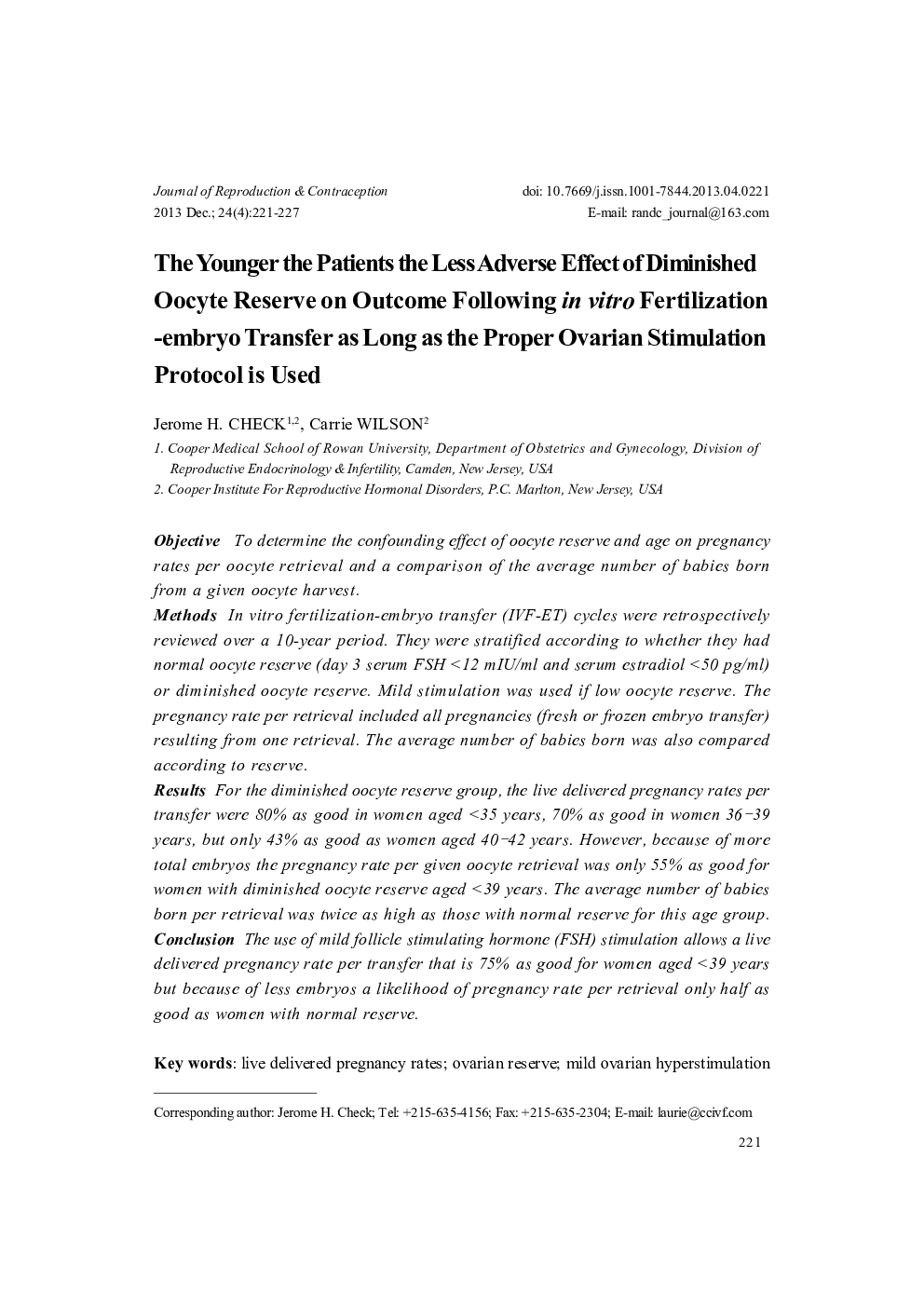| Article ID | Journal | Published Year | Pages | File Type |
|---|---|---|---|---|
| 3960816 | Journal of Reproduction and Contraception | 2013 | 7 Pages |
ObjectiveTo determine the confounding effect of oocyte reserve and age on pregnancy rates per oocyte retrieval and a comparison of the average number of babies born from a given oocyte harvest.MethodsIn vitro fertilization-embryo transfer (IVF-ET) cycles were retrospectively reviewed over a 10-year period. They were stratified according to whether they had normal oocyte reserve (day 3 serum FSH <12 mIU/ml and serum estradiol <50 pg/ml) or diminished oocyte reserve. Mild stimulation was used if low oocyte reserve. The pregnancy rate per retrieval included all pregnancies (fresh or frozen embryo transfer) resulting from one retrieval. The average number of babies born was also compared according to reserve.ResultsFor the diminished oocyte reserve group, the live delivered pregnancy rates per transfer were 80% as good in women aged <35 years, 70% as good in women 36–39 years, but only 43% as good as women aged 40–42 years. However, because of more total embryos the pregnancy rate per given oocyte retrieval was only 55% as good for women with diminished oocyte reserve aged <39 years. The average number of babies born per retrieval was twice as high as those with normal reserve for this age group.ConclusionThe use of mild follicle stimulating hormone (FSH) stimulation allows a live delivered pregnancy rate per transfer that is 75% as good for women aged <39 years but because of less embryos a likelihood of pregnancy rate per retrieval only half as good as women with normal reserve.
